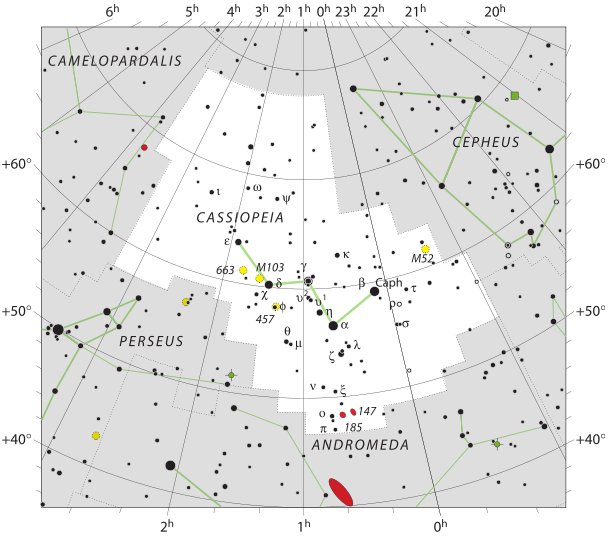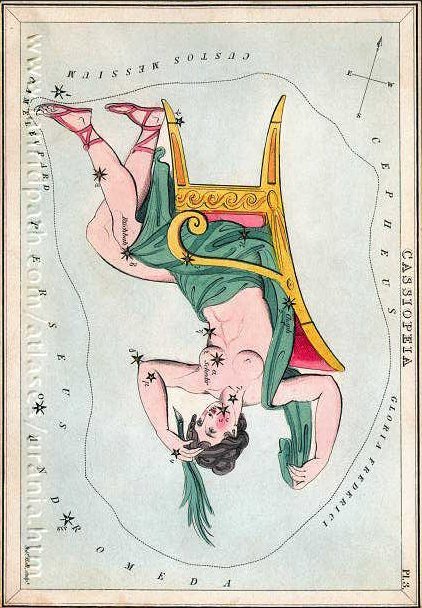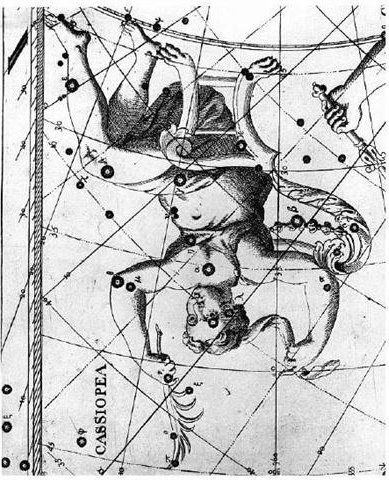1. Schedir is α in Cassiopeia and like Cetus the basic constellation is no longer at spring equinox (north of the equator):
We have in Urania's Mirror found Schedir to be on the front side of the queen, at her left breast:
Though according to my imaginative reading of Cassiopeia according to Flamsteed the star is not on her front side and not above her waist:
Instead it is on her left buttock, directly above what I imagine could be the head of the new ruler about to be born. The name Schedir is unclear in meaning: ... Schedar is first found in the Alfonsine Tables, and was Schedir with Hevelius; Shadar, Schedar, Shedar, Sheder, Seder, Shedia, Zedron, etc., elsewhere; and all supposed to be from Al Sadr, the Breast, which this star marks in the figure. Some, however, have asserted that they are from the Persian Shuter for the constellation ... Persian Shuter (for the constellation) is quite different in meaning from 'the breast'. Allen: "The Arabians called it Al Dhāt al Kursiyy, the Lady in the Chair - Chilmead's Dhath Alcursi, - the Greek proper name having no significance to them; but the early Arabs had a very different figure here, in no way connected with the Lady as generally is supposed, - their Kaff al Hadib, the large Hand [cfr Caph] Stained with Henna, the bright stars marking the fingertips; although in this they included the nebulous group in the left hand of Perseus. Chrysococca gave it thus in the Low Greek Χείρ βεβαμένη; and it sometimes was the Hand of, i.e. next to, the Pleiades, while Smyth said that in Arabia it even bore the title of that group, Al Thurayya, from its comparatively condensed figure. The early Arabs additionally made Two Dogs out of Cassiopeia and Cepheus, from which may have come Bayer's Canis; but his Cerva, a Roe, is not explained, although La Lande asserted that the Egyptian sphere of Petosiris had shown a Deer to the north of the Fishes. Al Tizini imagined a Kneeling Camel from some of its larger stars, whence the constellation's name Shuter found with Al Nasr al Din, and common for that animal in Persia ..." |
|||||||||||||||||||||||||||||||||||||||||||||||||||||||||||||||||



